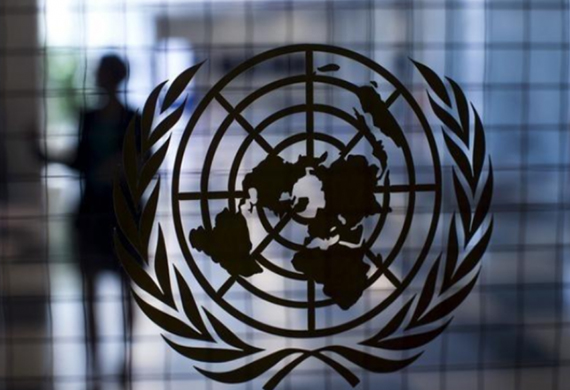
World's Second-Most Populous Nation has more Obese Adults & Anaemic Women, UN Report
By: WE Staff | Friday, 8 July 2022
According to a UN report, India's population of 224.3 million undernourished individuals has decreased over the past 15 years. However, the number of obese adults and anaemic women has increased in the world's second-most populated nation.
According to the State of Food Security and Nutrition in the World 2022 report, which was released on Wednesday by the World Health Organization (WHO), International Fund for Agricultural Development (IFAD), UNICEF, World Food Program (WFP), and Food and Agriculture Organization (FAO), 828 million people worldwide experienced hunger in 2021, up about 46 million from 2020 and 150 million since the Covid-19 pandemic's outbreak.
It stated that the number of stunted children under the age of five decreased from 52.3 million in 2012 to 36.1 million in 2020 and the number of overweight children under the age of five decreased from three million to 2.2 million in 2020.
However, India, which has a population of over 1.4 billion, saw an increase in the number of obese adults from 25.2 million in 2012 to 34.3 million in 2016, and an increase in the number of women with anaemia between the ages of 15 and 49 from 171.5 million in 2012 to 187.3 million in 2019.
According to the survey, from 11.2 million in 2012 to 14 million in 2020, exclusively breastfed infants up to the age of five months were reported.
In India, the prevalence of stunting in children under the age of five decreased from 41.7 percent in 2012 to 30.9 percent in 2020, and the prevalence of overweight children under the age of five decreased from 2.4 percent in 2012 to 1.9 percent in 2020. In percentage terms, the prevalence of undernourishment in the country's entire population stood at 21.6 percent in 2004-06 and fell to 16.3 percent in 2019-21.
3.9 percent of adults in India were obese in 2016, up from 3.1 percent in 2012, while 53 percent of women between the ages of 15 and 49 were anaemic in 2012, down from 53.2 percent in 2012.
Most Viewed
- 1 Women's Health Startup HerMD Closing Doors Amid Industry Challenges
- 2 5 Famous Women in Indian Armed Forces
- 3 Saudi Women No longer Require Male Permission for Clothing Choices, says Prince MbS
- 4 Kolkata Medtech Startup Innovodigm Raises Rs 5.5 Crore Seed Funding Led by IAN Group
- 5 Yamunanagar's Kashish Kalra Honoured after Securing 111th Rank in UPSC Civil Services Exam
- 6 Madurai Appoints Its First Woman Corporation Head
- 7 IAS Vijayalakshmi Bidari Appointed as the new Nagpur Divisional Commissioner
- 8 American Entrepreneur Lucy Guo Overtakes T Swift to become Youngest Female Billionaire
- 9 ICC Women's World Cup 2025 Trophy Showcased at Indore's Holkar Stadium
- 10 Aparna Saxena's Beauty Venture AntiNorm Launches in India
- 11 Vidya Nataraj Co-Founded BlueStone Jewellery & Lifestyle files IPO
- 12 5 Women Freedom Fighters of India
- 13 Dr. G Krishnapriya appointed as CEO for Trichy
- 14 M3M & Sirona Partner to Introduce Menstrual Hygiene Vending Machines in 15 Locations
- 15 Punjab Govt launches SHE Cohort 3.0 Supporting Tech-led Women Startups
- 16 Indian origin Lawyer, Sweena Pannu appointed as the US New Superior Court Judge
- 17 The Aurora Tech Award recognizes 4 Indian Women-led Startups
- 18 Kerala's Republic Day parade featured an all-female tableau
- 19 Manisha Kabbur Becomes Karnataka's First Woman International Karate Coach
- 20 Director K. S. Ravikumar's Daughter Maalica Ravikumar Launches Life Coaching Company 'Evergrowth Academy' for Women
- 21 Leezu's Raises Pre-Seed Funding to Accelerate Growth in Sexual Wellness Industry
- 22 Sattu: Super-easy summer drink for PCOS gut healing
- 23 Swathi Nelabhatla creates Sitha App, India's First Women-Exclusive Gig Platform
- 24 7 Timeless Female Kathak Dancers & their Iconic Legacies
- 25 Meet 7 Iconic Women Architects of Modern India & their Most Impactful Work
- 26 This Woman-led Insuretech Startup is Helping Bridge the Education Financing Gap in India
- 27 Women Leaders Share Lessons Learnt from India Women's WC Win
- 28 5 Enterprising Women Founders Powering Singapore's Tech & Innovation Landscape
- 29 4 Women. 4 Stories. One Vision for Smarter, Stronger Healthcare
- 30 Global Gender Gap Narrows to 68.8%, But Full Equality 123 Years Away: WEF Report 2025
- 31 Changemakers: 7 Women Entrepreneurs Taking the Make in India Movement Forward
- 32 Meet Lucy Guo, The Youngest Self-Made Female Billionaire Disrupting Tech
- 33 How Women are Driving India's Festive Online Shopping Surge


.jpg)



